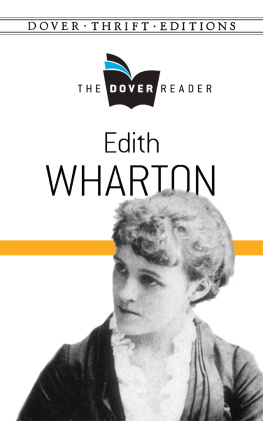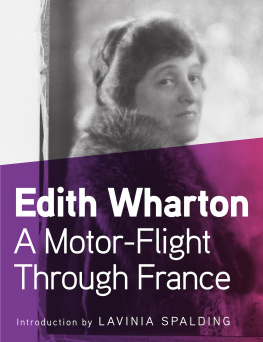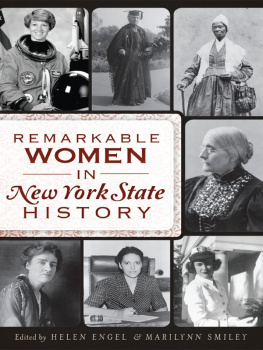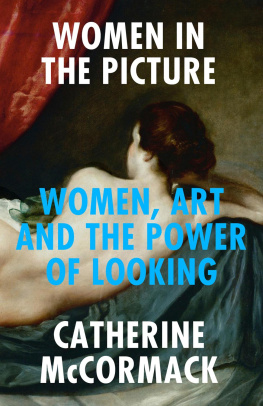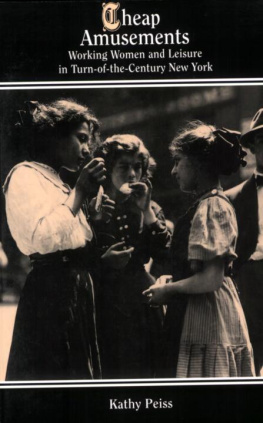For Mary and Joseph Montgomery
First published 1998 by Routledge
Published 2016 by Routledge
2 Park Square, Milton Park, Abingdon, Oxon OX14 4RN
711 Third Avenue, New York, NY, 10017, USA
Routledge is an imprint of the Taylor & Francis Group, an informa business
Copyright 1998 by Routledge
All rights reserved. No part of this book may be reprinted or reproduced or utilized in any form or by any electronic, mechanical, or other means, now known or hereafter invented, including photocopying and recording or in any information storage or retrieval system, without permission in writing from the publishers.
Library of Congress Cataloging-in-Publication Data
Montgomery, Maureen E.
Displaying women : spectacles of leisure in Edith Whartons New York / Maureen E. Montgomery.
p. cm.
Includes bibliographical references and index.
1. Wharton, Edith, 1862-1937KnowledgeNew York (State)New York. 2. Women and literatureNew York (State)New York. 3. Upper classNew York (State)New YorkHistory. 4. Wharton, Edith, 1862-1937Characters-Women. 5. New York (N.Y.)In literature. 6. Upper class in literature. 7. Leisure in literature. 8. Women in literature. I. Title.
PS3545.H16Z747 1998
813.52dc21
97-31983
CIP
British Cataloging-in-Publication Data forthcoming
ISBN 13: 978-0-415-90565-7 (hbk)
ISBN 13: 978-0-415-90566-4 (pbk)
This study has its origins in a discussion with Carroll Smith-Rosenberg that took place during a miserable winter in Canterbury at a time when she was a visiting fellow in my department. After the publication of my doctoral dissertation, the question What next? loomed large. It seemed a demanding question then, all the more so because of my recent relocation to New Zealand and the geographical distance between my new home and the archives in the United States. I thank Carroll for giving me both the incentive and the encouragement to pursue my professional identity as an Americanist.
My next important stimulus (and a major source of material support) came from a visit to New Zealand later that same year of a visiting Fulbright Scholar, Cecilia Macheski, who shares my passion for Edith Whartons writings and who just so happens to live not all that far from The Mount, Whartons home from 1902 to 1913. A research and travel grant from the Department of History at the University of Canterbury meant that my project could begin in earnest. Support for the next phase came from a University of Canterbury research grant and a fellowship at the New York State Archives. In this connection, I wish to thank Jim Corsaro, Elaine Clark, and Billy Aul for their gracious assistance. While in Albany I also made frequent trips to the Albany Institute of History and Art, where I was kindly aided by Mary Schifferli and Prudence Backman and, more recently, by Sandra Markham. My host, Cecilia Macheski, whose hospitality knows no bounds, took me touring around New York State and the Berkshires, visiting the various summer homes of wealthy New Yorkers from the turn of the century and enjoying the local fare. Thanks to conference leave and research grants from my department, American Studies, there have been several trips since, more archives plundered, and more red wine consumed. Cecilia Macheskis colleagues at LaGuardia Community College, her family, and her friends have also been materially and intellectually supportive of my project: Marian Arkin, Sandra Hanson, Danny and Clellie Lynch, Russell Needham and Leonard Vogt, Jeremiah Rusconi, and Helen Macheski.
In 1992 I was granted a years study leave from the University of Canterbury and spent a more extensive period in the New York archives. During this trip I visited many places that had been used as settings by Martin Scorsese in his film The Age of Innocence. In fact, I even spent a month in a Brooklyn brownstone apartment on a street used in the movie. At this time, I made several trips out to the Rye Historical Society and greatly enjoyed being a solitary researcher in the company of the wonderfully friendly and helpful staff there. Three months were then spent as a fellow at the Henry Francis DuPont Winterthur Museum, Delaware, in luxurious surroundings. This was a very fruitful time for my research and thinking, and I particularly wish to thank Neville Thompson and Pat Elliott for their gracious assistance and Mary Corbin Sies for her support and encouragement. I gained a different perspective on studying everyday life in turn-of-the-century New York through my contact with the staff and students at Winterthur. At this stage, I needed one last foray into the archives before I could settle down to write, and on this occasion I was the recipient of the generous hospitality of Steve and Hasia Diner in Washington, D.C. While much of the research was conducted in the United States, I must also acknowledge the kind assistance of the staff at the University of Canterbury Library over the past seven years as well as that of the staff at the Victoria University Library in Wellington.
Over the years, my graduate students have been subjected to various manifestations of this project in my Gender, History, and Fiction class, and I thank them for their contributions to our lively discussions of Whartons novels. Other audiences have also been recipients of various stages of my thinking, and in this connection I would especially like to thank Jean Lown and the members of the Women and Gender Research Institute and Women Studies Program at Utah State University; Rosemary Du Plessis and the Department of Sociology at the University of Canterbury; Clare Simpson and the Department of Leisure Science at Lincoln University; Ellen Dubois and the Womens Studies and American Studies Programs at the University of California at Los Angeles; Mary Ryan, Tom Laqueur, and the Department of History at the University of California at Berkeley; Karen Offen and members of the Women and Gender Research Institute at Stanford University; John and Joy Kasson and the American Studies Program at the University of North Carolina at Chapel Hill; John David Smith and the History Department at North Carolina State University; Eric Sandeen and the American Studies Program at the University of Wyoming; and Leonore Davidoff and the Social History Seminar Group at the University of Essex. I have also gained from the discussions and insights arising from giving papers at the following conferences: meetings of the Australian Victorian Studies Association at Auckland in 1993, Hobart in 1994, and La Trobe in 1995; and Rod Phillips Family History Conferences at Carleton University in 1992, 1994, and 1997.
At Routledge I would like to thank Brendan OMalley and Brian Phillips for their support and attentive responses to my queries; Sue Warga for her assiduous copy-editing; and Cecelia Cancellaro, formerly of Routledge, who was my initial editor.
To Clare Simpson and Rosemary Du Plessis I owe special thanks for undertaking to read parts of the manuscript and for their warm and generous support over the years. Cornelia Sears generously gave of her time to assist with proofreading during the hottest week of the summer. I am also especially grateful to the following for their help and encouragement: Terry Austrin, Constance Carroll, Nabila Jaber, Chigusa Kimura-Steven, Sharon Mazer, Maureen Molloy, and Michele Slatter. And I owe a special debt to Gwen Standring for her support, particularly since I took on the headship of my department. The love and support of my parents, as ever, played a crucial role, and to them I dedicate this book.


